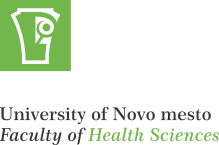Students of Physiotherapy and Hand Hygiene
Keywords:
physiotherapy, prevention of healthcare- associated infections, hand disinfection, hand washingAbstract
Physiotherapists as the healthcare professionals play an important part in preventing infections associated with health care. Compliance with guidelines for the implementation of hand hygiene is largely dependent on the beliefs, knowledge and attitudes of healthcare workers. The aim of the study was to determine the beliefs and knowledge of physiotherapy students about hand hygiene. The questionnaire was used to determine our results and the respondents were 148 students of physiotherapy. The results showed that the majority of respondents had positive beliefs about hand hygiene. The situations when hand hygiene may be omitted (e.g. having too much work, the lack of adequate soap, a dirty sink) were estimated by the respondents diversely. They demonstrated the lack of knowledge in disinfection of hands and hand washing. The major differences between the years of study were not observed. The results further indicate the need for an in-depth and systematic education about hand hygiene throughout the study programme, with special emphasis on the use of active forms of learning (simulations, case studies, active clinical training).
References
Agbaba, D. (2014). Rezultati opazovalne študije higiene rok zdravstvenih delavcev v splošni bolnišnici Jesenice. Diplomsko delo. Jesenica: Fakulteta za zdravstvene vede.
Bargellini, A., Borella, P., Ferri, P., Ferranti, G. and Marchesi, I. (2012). Hand hygiene in nursing and medical studnets during training: a pilot study on knowledge, practices and impact on bacterial contamination. Assistenza infermiesristica e ricerca, 31, št. 3, str. 123–130.
D‘Alessandro, D., Agodi, A., Auxilia, F., Brusaferro, S., Calligaris, L., Ferrante, M. et al. (2014). Prevention of healtcare associated infections: medical and nursing students‘ knowledge in Italy. Nurse Education Today, 34, št. 2, str. 191–195.
Gould, D. and Drey, N. (2013). Student nurses‘ experiences of infection prevention and control during clinical placements. American Journal of Infection Control, 41, št. 9, str. 760–763.
Grilc, T., Muzlovič, I., Jereb, M. and Trampuž, A. (2004). Higiena rok zdravstvenega osebja v intenzivni enoti. Medicinski razgledi, št. 43, str. 45–53.
Kelcikova, S., Skodova, Z. and Straka, S. (2012). Effectiveness of hand hygiene education in a basic nursing school curricula. Public Health Nursing, 29, str. 2, 152–159.
Larson, E. (2001). Hygiene of the skin: when is clean too clean? Emerging Infective Disease, 7, št. 2, str. 225–230.
Lešer, V. and Filej, B. (2015). Stališča študentov zdravstvene nege do higiene rok. V Kregar Velikonja, N. in Blažič, M. (ur.). Celostna obravnava pacienta v zdravstvenem in socialnem varstvu [Elektronski vir]: zbornik prispevkov: mednarodna znanstvena konferenca, 14. november 2014. Novo mesto: Fakulteta za zdravstvene vede, str. 202–208.
Luctkar-Flude, M., Baker, C., Hopkins-Rosseel, D., Pulling, C., McGraw, R., Medves, J., Krause, A. and Brown, C. A. (2014). Development and evaluation of an interprofessional simulation-based learning module on infection control skills for prelicensure health professional students. Clinical Simulation in Nursing, 10, št. 8, str. 395–405.
Luctkar-Flude, M., Hopkins-Rosseel, D., Jones-Hiscock, C., Pulling, C., Gauthier, J., Knapp, A., Pinchin, S. and Brown, C. A. (2016). Journal of Interprofessional Education and Practice, 2, str. 25–31.
Lužnik-Bufon, T. (ur.) (2009). Strokovne podlage in smernice za obvladovanje in preprečevanje okužb, ki so povezane z zdravstvom oziroma zdravstveno oskrbo. 2. dop. izd. Ljubljana: MZ RS. Pridobljeno dne 2. 11. 2012 s svetovnega spleta: http://www.mz.gov.si/fileadmin/mz.gov.si/pageuploads/mz_dokumenti/delovna_podrocja/zdravstveno_varstvo/zdravstveno_varstvo_v_posebnih/NAKOBO_junij_2010/MZ_Smernice_2009_ORIG_SKUPNO_010610.pdf.
Matos, T. (2013). Nova spoznanja na področju obvladovanja okužb, povezanih z zdravstvom. Medicinski razgledi, 52, št. 6, str. 89–98.
Van de Mortel, T. (2009). Development of a questionaire to assess health care students‘ hand hygiene knowledge, beliefs and practices. Australian Journal of Advanced Nursing, 26, št. 3, str. 9–18.
Van de Mortel, T., Apostolopoulou, E. A. and Petrikkos, G. L. (2010). A comparison of hand hygiene knowledge, beliefes, and practices of Greek nursing and medical students. American Journal of Infection Control, 38, št. 1, str. 75–77.
Van de Mortel, T. F., Kermode, S., Progano, T. and Sansoni, J. (2012). A comparison of the hand hygiene knowledge, beliefs and practices of Italian nursing and medical students. Journal of Advanced Nursing, 68, št. 3, str. 569–579.
WHO Guidelines and Hand Hygiene in Health Care. (2009). World Health Organisation. Pridobljeno dne 2. 11. 2014 s svetovnega spleta: http://whqlibdoc.who.int/publications/2009/9789241597906_eng.pdf?ua=1.
WHO Guidelines and Hand Hygiene in Health Care: a summary. (2009). World Health Organisation. Pridobljeno dne 10. 5. 2016 s svetovnega spleta: http://www.who.int/gpsc/5may/tools/who_guidelines-handhygiene_summary.pdf.





